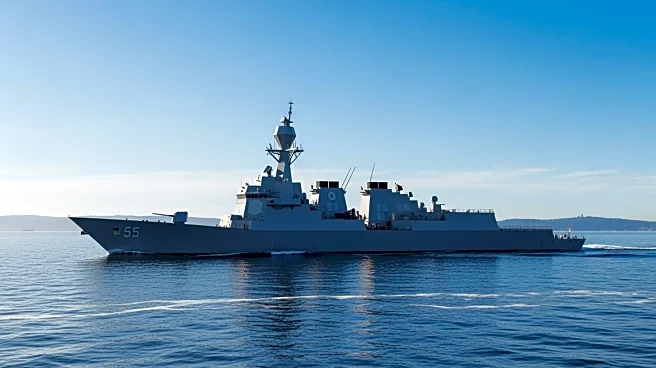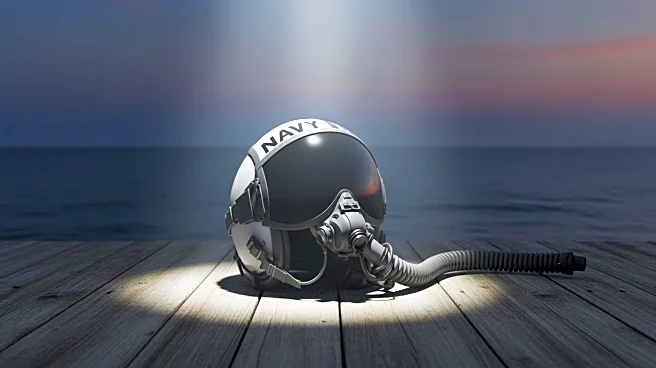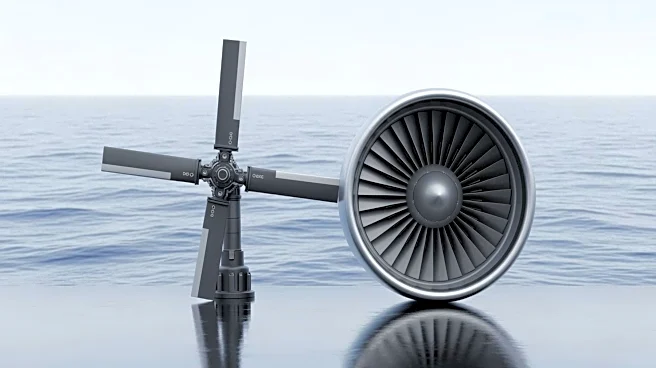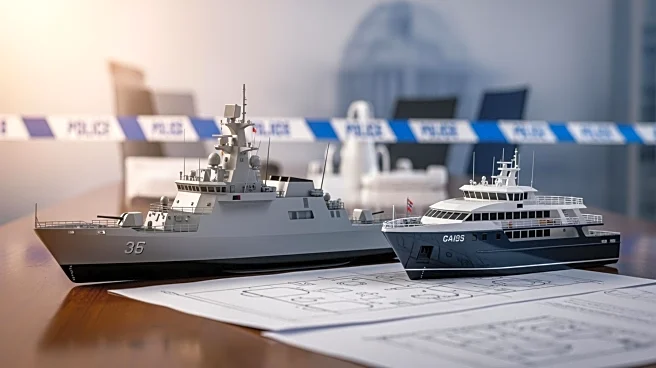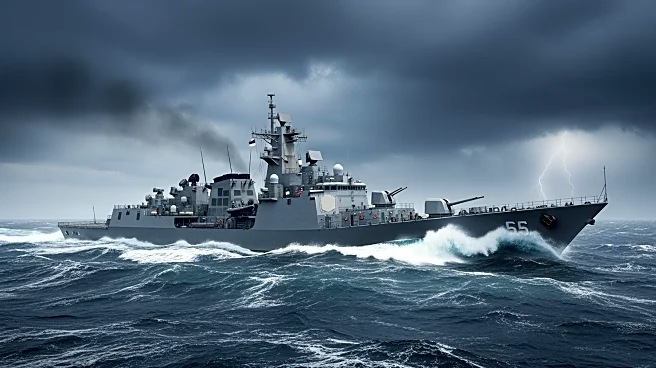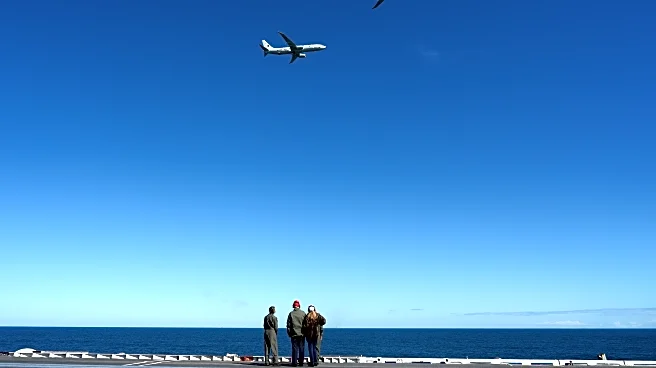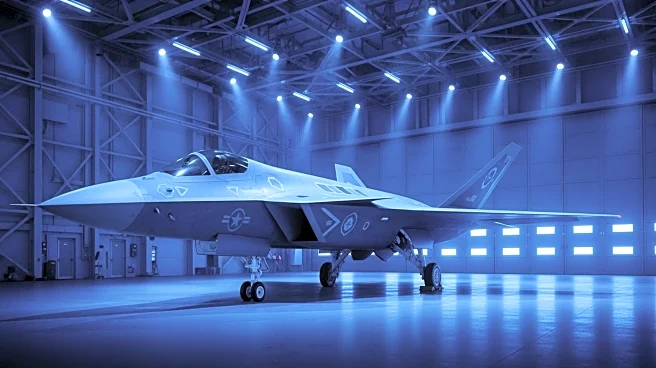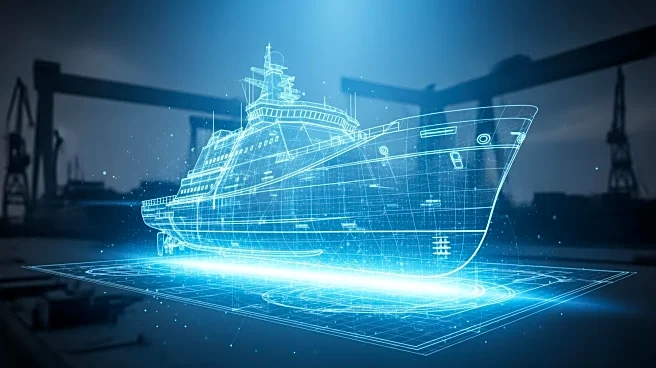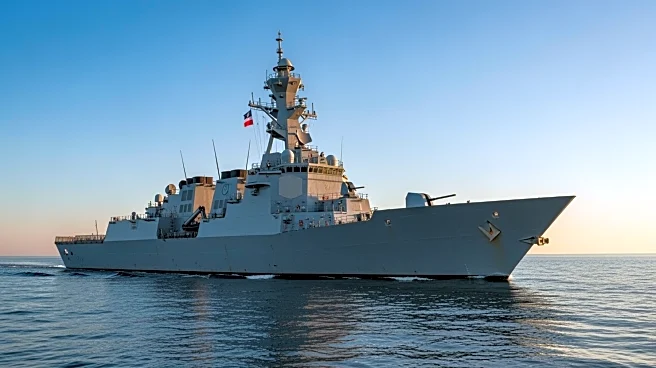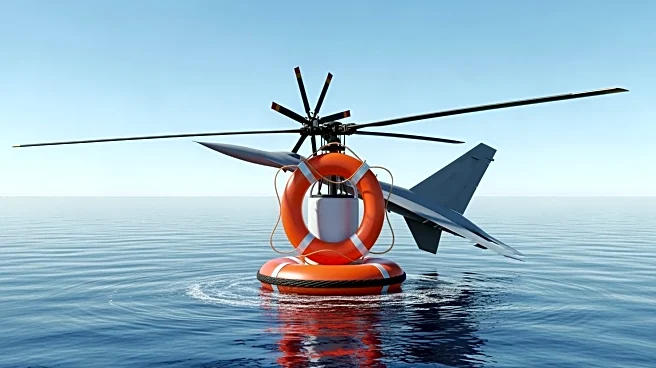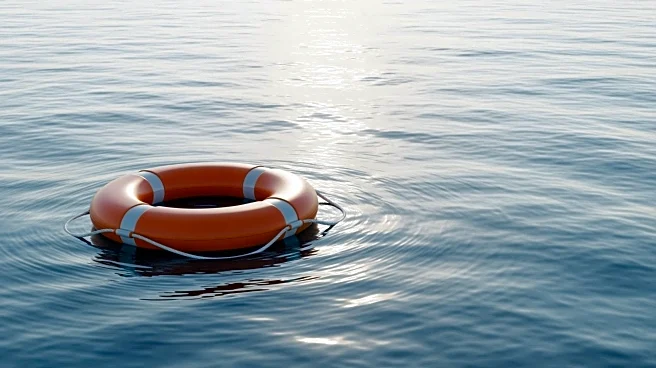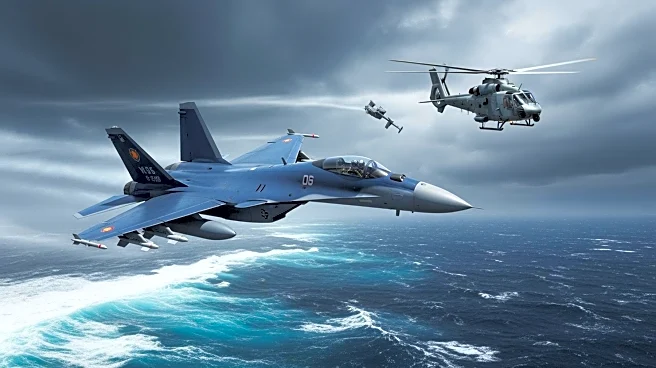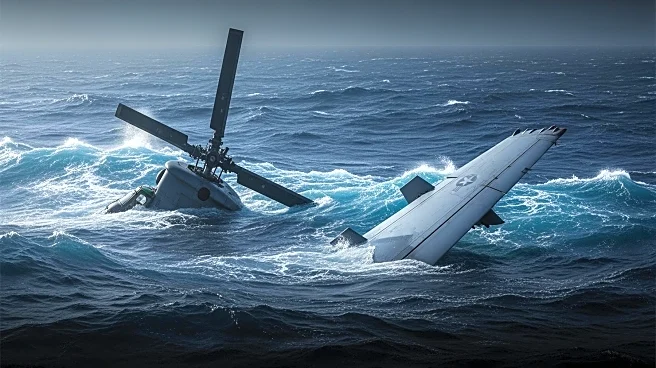What's Happening?
HII's Ingalls Shipbuilding division has successfully completed the second builder's sea trials for the guided missile destroyer Ted Stevens (DDG 128). These trials, conducted in the Gulf of America, focused on testing the ship's main propulsion, combat
systems, and other critical systems. The trials are part of the preparation for future acceptance trials, ensuring the destroyer meets Navy requirements. The Ted Stevens is part of the Flight III Arleigh Burke-class destroyers, which represent the next generation of surface combatants for the U.S. Navy. These ships incorporate design modifications that enhance their capabilities significantly. Ingalls has delivered 35 Arleigh Burke-class destroyers to the Navy, including the first Flight III, USS Jack H. Lucas (DDG 125). Currently, five more Flight III destroyers are under construction, including Ted Stevens.
Why It's Important?
The completion of the second builder's sea trials for the destroyer Ted Stevens marks a significant step in advancing the U.S. Navy's surface combatant capabilities. Flight III Arleigh Burke-class destroyers are equipped with advanced radar and combat systems, such as the AN/SPY-6 (V)1 radar and Aegis Baseline 10 combat system, which enhance their operational effectiveness. These advancements are crucial for maintaining naval superiority and addressing evolving threats. The successful trials demonstrate the reliability and performance of these systems, ensuring the Navy's readiness and strategic advantage. The construction and deployment of these destroyers also reflect ongoing investments in military technology and defense infrastructure, impacting defense contractors and related industries.
What's Next?
Following the successful sea trials, the destroyer Ted Stevens will undergo acceptance trials, which are the final step before delivery to the U.S. Navy. These trials will further validate the ship's systems and performance. Once delivered, the destroyer will join the fleet, contributing to the Navy's operational capabilities. The ongoing construction of additional Flight III destroyers, such as Jeremiah Denton (DDG 129) and George M. Neal (DDG 131), indicates continued expansion and modernization of the Navy's surface fleet. Stakeholders, including defense contractors and military strategists, will closely monitor these developments, as they have implications for national security and defense policy.
Beyond the Headlines
The development and deployment of Flight III Arleigh Burke-class destroyers highlight the U.S. Navy's strategic focus on technological innovation and modernization. These ships are designed to address contemporary maritime threats, including cyber warfare and missile defense. The integration of advanced radar and combat systems reflects a shift towards more sophisticated and adaptable naval platforms. This evolution in naval technology may influence global naval strategies and defense collaborations, as other nations respond to the U.S. advancements. Additionally, the construction of these destroyers supports economic activity in shipbuilding regions, contributing to local economies and employment.
